Overview of types of baguettes
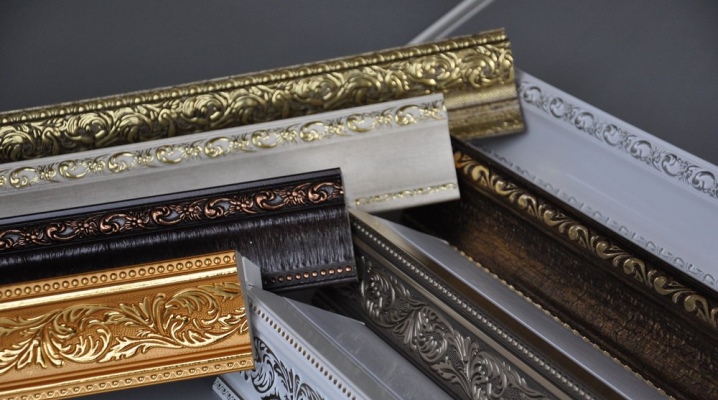
The word "baguette" can cause different associations - from an art gallery to a type of bakery product. In relation to the interior, this word acquires another interpretation. Once it was only a carved wooden plank, today designers call skirting boards, moldings, platbands and fillets, which have become indispensable attributes of room decoration, as baguettes.
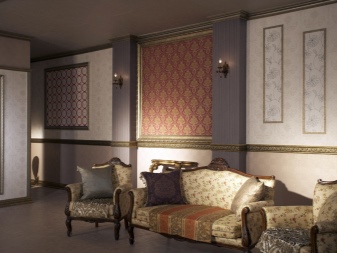
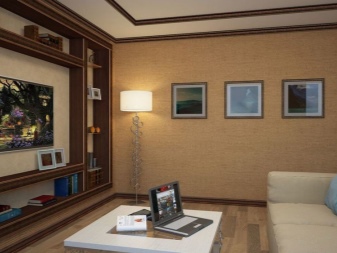
What are the intended uses?
This interior element has several tasks.
Sometimes the owner is not afraid of daring ideas and comes up with a new function for a baguette, makes an author's design, in which familiar things take on new roles.
But basically the functionality of those elements that are usually combined with the word "baguette" can be considered complete.
What are baguettes for?
- Ceiling decoration. The ceiling element, on the one hand, masks the seam at the junction of the ceiling and the wall, on the other hand, it serves as a decor for the room. Often there is no need to hide the seam, everything fits perfectly and looks good. But as soon as a baguette appears at the junction, the picture seems complete. Because the ceiling element also structures the visual image of the room, makes it integral and harmonious.
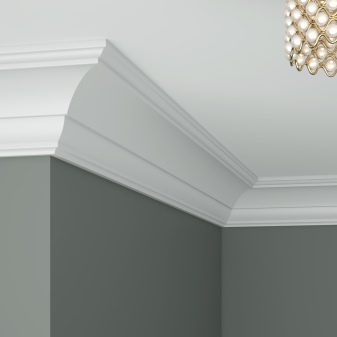
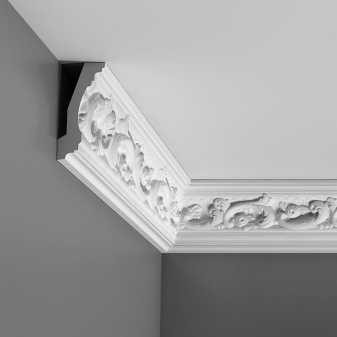
- Wall design. Thanks to the baguette, you can highlight any part of the interior. For example, a photo series is organized on one of the walls, which I would like to emphasize. And the baguette becomes an elegant frame for the decorative row. Sometimes you need to somehow designate an accent wall, draw attention to it, and this can also be a baguette. This option is not uncommon for the living room. For example, there is a desire to highlight the wall part of the media zone, emphasize it not with a different color or type of wallpaper, but with the formation of an elegant frame.
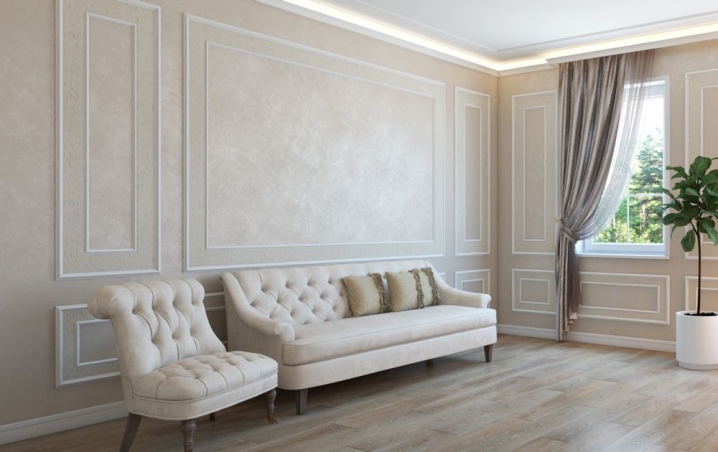
- Niche design. If the room has a niche, it can also be made more expressive. And if there are bookshelves, a mirror, or something else in a niche, a baguette framing can be the final touch.
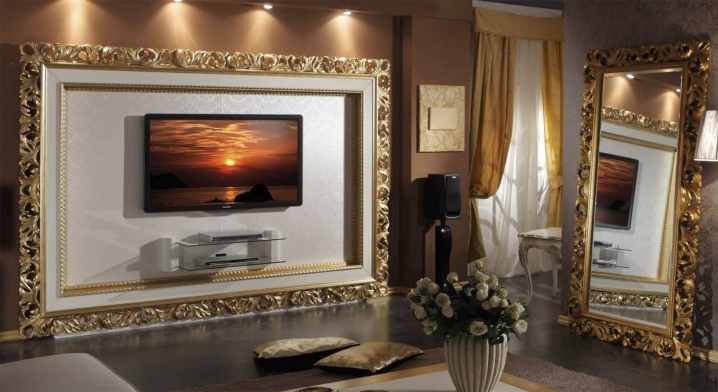
- Furniture decoration. Today it is fashionable to restore furniture, to turn faceless or typical objects into something exclusive. Furniture moldings do an excellent job with this. They highlight the geometry of the cabinet or headset, for example, help it become more convincing and weighty in the overall picture. The baguette fronts of the cabinet will turn a simple, discreet piece of furniture into an interesting author's version.
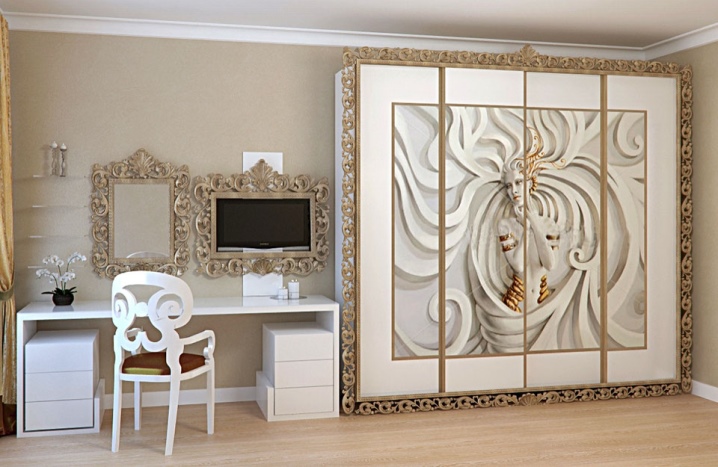
- Window framing. This option cannot be called very popular, but it is definitely interesting. If the windows are worth highlighting, then not necessarily with massive curtains or boring blinds - maybe it will be a baguette frame around the perimeter, which positions the window in the interior in a completely different way.
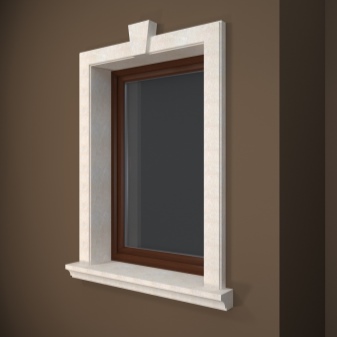

Plinth on the floor is also often called a baguette, although the first name is more familiar. And its role cannot be overestimated - the space looks complete, geometrically verified.
Views by material
Construction and repair work, and then design work, require a lot of consideration of the little things.
By the way, if you don't write down every purchased baseboard and self-tapping screws, the final repair budget will turn out to be overestimated - it's not at all clear where so much money went.
And they are eaten by those very little things. Therefore, even at the planning stage, knowing that you cannot do without baguette decoration, it makes sense to look at different types of baguettes. Including to ask the price.
According to the materials, baguettes are of the following types.
- Wood. This is the most popular option, especially today (after all, the ecovector is the most powerful in home decoration).Wooden baguettes not only decorate the space, they create the right microclimate in it. True, if the interior is not called by another word, like "luxury", the tree in it may look rustic. In all other respects, wooden moldings are excellent - environmentally friendly, affordable, easy to install. However, they are not as flexible as, for example, a plastic baguette. MDF baguettes have become popular, they look really good.
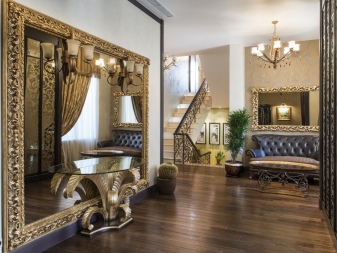
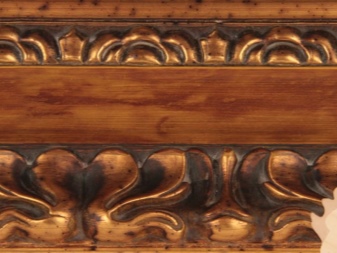
- Plaster. In rich interiors, where the budget can not be called economical, the baguettes are mostly plaster. They help in the implementation of the most complex design developments. A plaster frieze often looks like a skillful stucco molding, therefore, like nothing else, it helps to make the interior elegant and graceful. The decorative complexity of fillets is any, and this is the main advantage of gypsum.
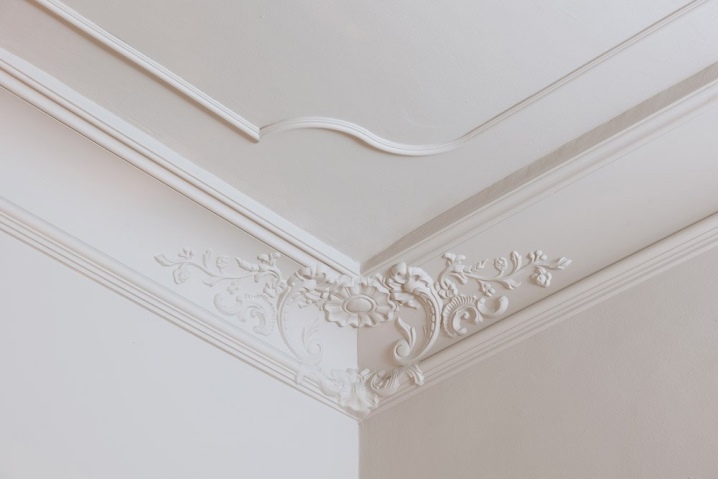
- Plastic. The most common design option for the joints of the wall and stretch ceiling. This is a bar with locking grooves. Usually, products of this type are white, beige, milky, ivory. But you can also find a plastic molding that imitates wood or marble. The main advantage of plastic is its low cost, they look aesthetically pleasing. Although in modern interiors they try to do without plastic, some things are compromise, and this is good.
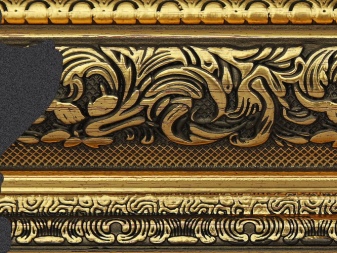
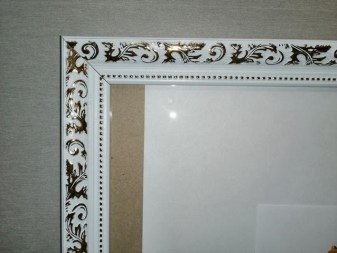
- Aluminum. It is a lightweight yet metallic construction, and it is also in demand today. For hi-tech, avant-garde, pop-art, such a decision, one might say, is salutary, because you have to make curvilinear forms more noble. Such an interior baguette looks great not only on ceilings and walls, it decorates mirrors, photographs, posters.
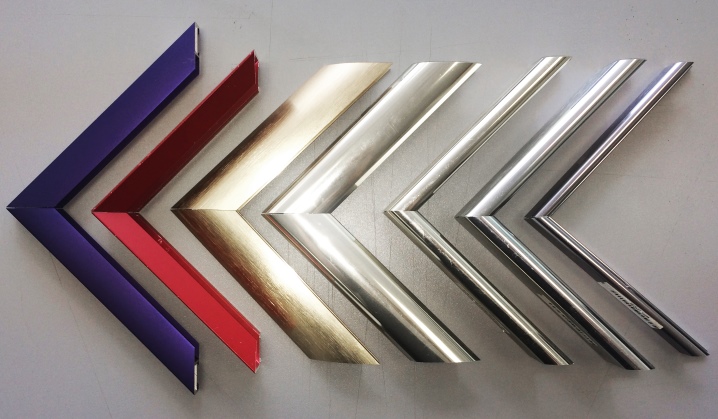
- Foam. It is also a very cheap product, which is why it is popular. True, this is only a temporary move, because for many years the foam will definitely not serve. He quickly loses its attractiveness, begins to crumble. Although at first the foam molding can pass for stucco molding - an unpretentious eye will not notice the difference.
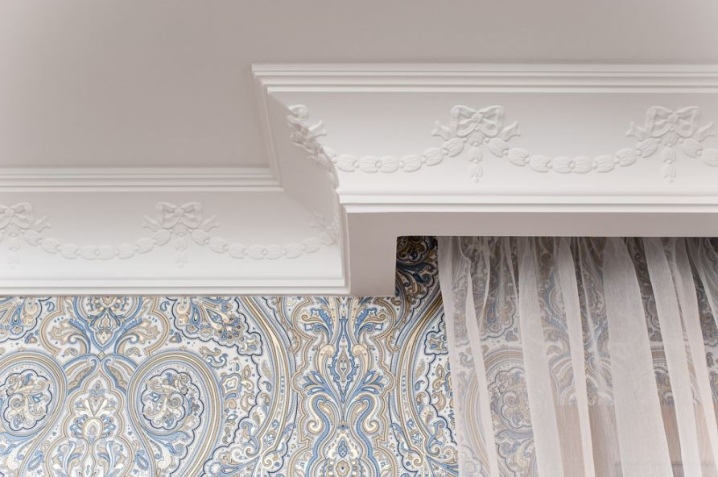
- Polyurethane. Polyurethane foam is durable and lightweight, such a baguette will last much longer than foam. He is not afraid of moisture and too dry air, it is easy to assemble such a structure with your own hands. Finally, polyurethane is very flexible, so many design ideas can be played around. It is gratifying that the polyurethane foam friezes can be painted, that is, the adaptation to the interior will be complete.
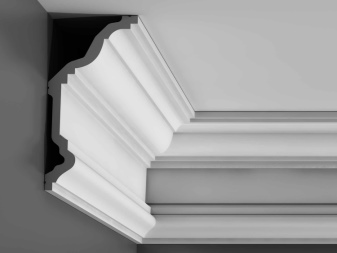
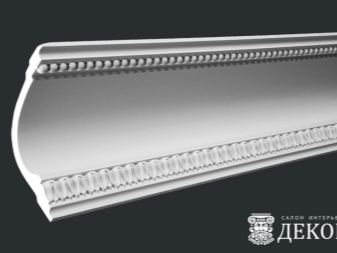
For every taste, for every wallet - the choice is large, sometimes the last argument is the ease of installation of the baguette.
Varieties by installation method
The choice of installation depends on how the structure looks from the inside out. The baguette can have a flat sole, an elongated wall part with a shortened ceiling and the same edges for corner fixing. A flat sole is a good option for zoning spaces as well as framing niches and objects. She perfectly decorates the transitions of materials in the interior, drawings, adjacent textures.
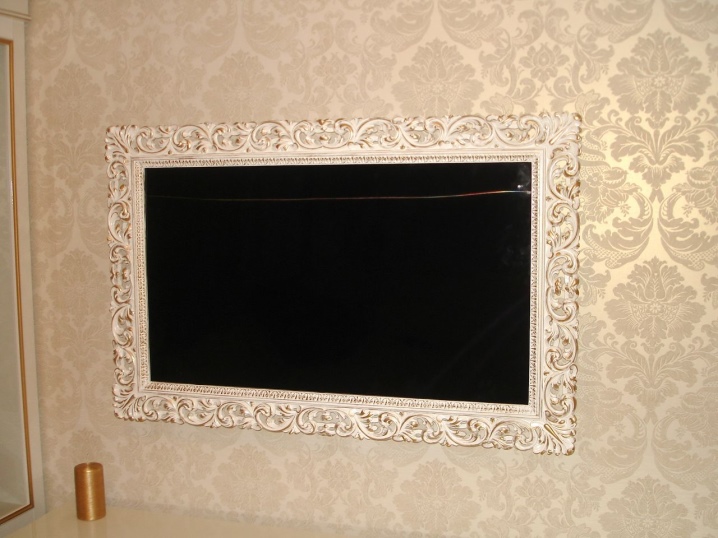
The second option is also interesting, the baguette will allow you to either raise the ceiling, or make it heavier. A backlight can be hidden behind the second baguette, and no additional manipulations are required. It's just that the top edge drops horizontally 2 cm lower - that's the whole trick. The part that is to be glued to the ceiling surface will become the "landing" for the LED strip.
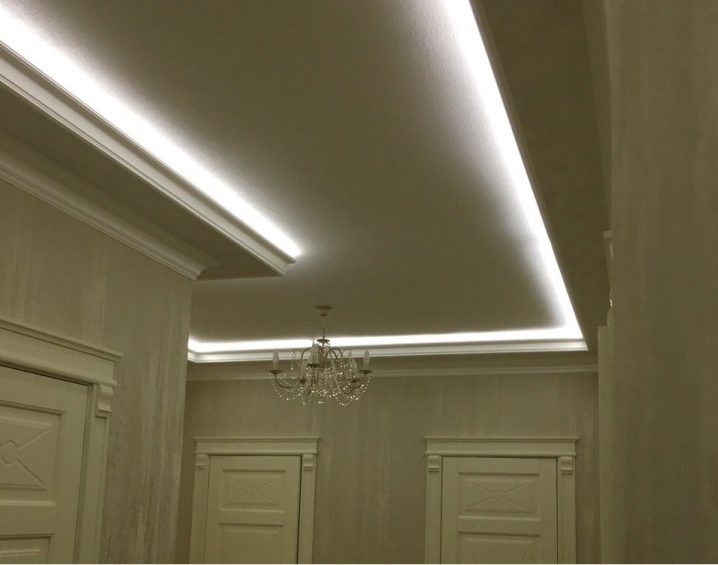
Of course, when choosing baguettes, you need to take into account many points - for example, in a large room a large relief is appropriate, in a small one it will be ridiculous. If extra vertical lines appear in the room, this will add severity to it, if horizontal - it will be more dynamic. If you want to make repairs for many years, you cannot skimp on baguettes, let them be made of valuable tree species.
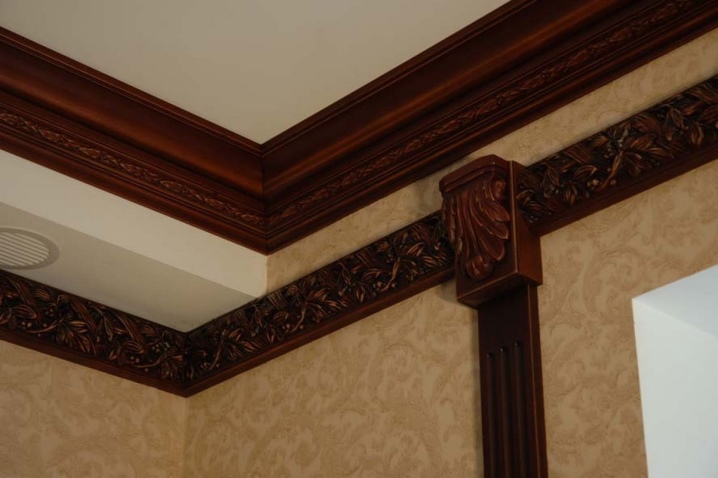












The comment was sent successfully.